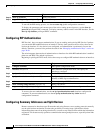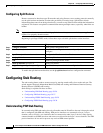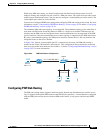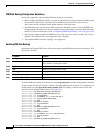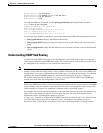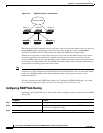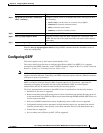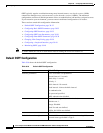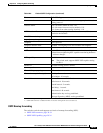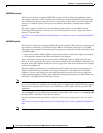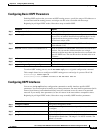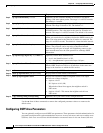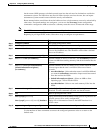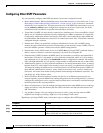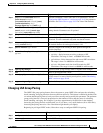
38-32
Cisco Catalyst Switch Module 3110 and 3012 for IBM BladeCenter Software Configuration Guide
OL-12189-01
Chapter 38 Configuring IP Unicast Routing
Configuring OSPF
OSPF typically requires coordination among many internal routers, area border routers (ABRs)
connected to multiple areas, and autonomous system boundary routers (ASBRs). The minimum
configuration would use all default parameter values, no authentication, and interfaces assigned to areas.
If you customize your environment, you must ensure coordinated configuration of all routers.
These sections contain this configuration information:
• Default OSPF Configuration, page 38-32
• Configuring Basic OSPF Parameters, page 38-35
• Configuring OSPF Interfaces, page 38-35
• Configuring OSPF Area Parameters, page 38-36
• Configuring Other OSPF Parameters, page 38-38
• Changing LSA Group Pacing, page 38-39
• Configuring a Loopback Interface, page 38-40
• Monitoring OSPF, page 38-40
Note To enable OSPF, the switch or stack master must be running the IP services feature set.
Default OSPF Configuration
Table 38-6 shows the default OSPF configuration.
Table 38-6 Default OSPF Configuration
Feature Default Setting
Interface parameters Cost: No default cost predefined.
Resend interval: 5 seconds.
Send delay: 1 second.
Priority: 1.
Hello interval: 10 seconds.
Dead interval: 4 times the hello interval.
No authentication.
No password specified.
MD5 authentication disabled.
Area Authentication type: 0 (no authentication).
Default cost: 1.
Range: Disabled.
Stub: No stub area defined.
NSSA: No NSSA area defined.
Auto cost 100 Mb/s.
Default-information originate Disabled. When enabled, the default metric setting is 10, and the
external route type default is Type 2.



